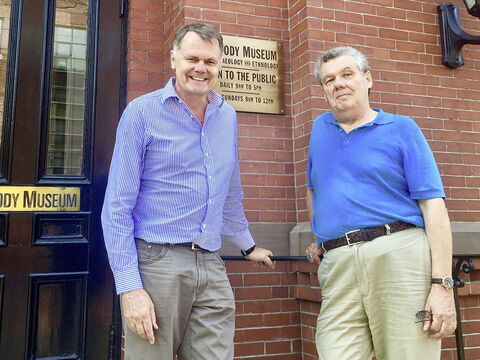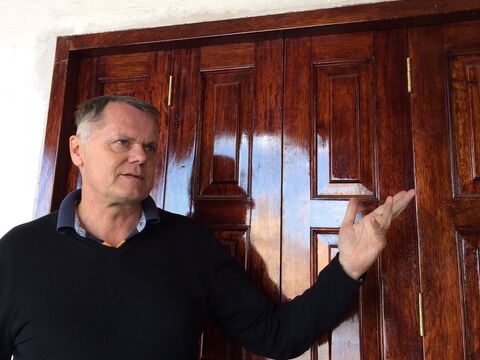
The book „The Illusion of Invincibility“
What's the Book All About?
This book is about the rise and fall of organizations and the key factors influencing their successes and failures. It's about good leadership, honest and perceptive self-management, inspiring visions, high quality people selection, trustworthy values, credible corporate governance and about how to focus an organization on the main task at hand, its long-term survival. It’s also about the mistakes, many of them self-inflicted, that are frequently made in each of these areas and cause organizations, large and small, to stumble and fall. This book will help you to lead your organization better, it will help you to manage yourself better and it will help you to understand your boss and your colleagues better as well. Oh, and it will make you think, smile and maybe even shudder, sometimes all at the same time. But above all, it will help prevent you from falling victim to the illusion of invincibility.
The tale of rags to riches is an attractive and enduring one and this dream lives on in countless start-ups and real-life success stories today, with Facebook, Google and Uber three of the best known current examples. But how certain can we really be that today’s shooting stars won’t meet the same fate as yesterday’s fallen stars? A brief glance at the Fortune 500, Eurostoxx, DAX or family-owned business rankings is enough to see how rarely organisations, large or small, are able to succeed in maintaining their positions at the top for anything more than just a few decades, all of which begs the question: Is the risk of failure an intrinsic part of every great triumph?
Today, when we search for the causes of these rapid falls from grace, we are quick to place the blame on digitalisation or “disruption”. However, this would seem to be only half the truth. The other half lies in the companies themselves; in poor leadership, selective blindness to threats and sheer carelessness. In this book, Andreas Krebs and Paul Williams look behind the façade of success and systematically expose the factors that can sound the death knell for a company: egomania, nepotism and the often poorly-disguised personal interests of managers, to name just some. They offer inside stories, talk to a selection of top leaders from a broad range of organisations and round it all off with a suitable dose of black humour.
In so doing, they reveal surprising parallels with the story of the Incas, who ruled a large and powerful empire for centuries before vanishing from the face of the earth virtually overnight. The comparison demonstrates that we’re still making many of the same mistakes today.
In an incisive, entertaining style, the book provides today’s business leaders with vital insights on the importance of constant vigilance, particularly in times of seemingly assured success and offers original and practical guidance on modern organisational leadership, self-management and achieving sustainable business success.

The Story Behind the Book
This book is not about the Incas, but without the Incas, it would never have been written!
It began quite innocently, with a business trip by Paul Williams to Peru. Prior to the trip, Paul had spoken to friends and experienced travellers of Latin America who had strongly advised him to experience more of the country’s wonderful culture than just three days at the Lima Hilton. Their advice and enthusiasm had consequences. Once the business meeting was concluded, there commenced a journey across Peru involving seven friends from four nations - one of whom was co-author Andreas Krebs. This book was triggered by what we learned on that journey.
Whilst we thought we had prepared ourselves well concerning the highly developed Inca culture of the 15th and 16th centuries, what we heard from our Peruvian guides in the breath-taking landscape at 3,500 metres above sea level made us pause to think much further. In Tipón, a former agricultural research centre of the Incas located 30 kilometres north-east of Cusco, we learned more about how, in just 100 years, the Incas created an empire stretching almost 5,000 kilometres along the Andes, from what is now Ecuador in the north to present-day Chile in the south. We learned how they efficiently organised and held together a kingdom that was home to some 200 ethnic groups; how they created surpluses through clever agricultural techniques, established storage facilities and cared for the sick and for families who had lost their main provider, all at a time when epidemics and famine were raging in Europe. We discovered how, before integrating a tribe or nation into their empire, they would first make an offer of a “friendly takeover” and only use their considerable military force if the offer was rejected. And we learned how they consistently endeavoured to integrate the conquered people into their empire and maintain peace thereafter by resettling people and developing the local infrastructure.
Originally, the trip was intended to give us a few days to relax from our day-to-day work as managers, supervisory board members, investors and coaches – yet we suddenly found ourselves talking about management - Inca management. How could it be that the Incas, who had neither the wheel nor a system of writing, let alone modern communication technology, had built and dominated a vast empire, while many modern-day mergers fail under far more favourable conditions? How did the Incas manage to establish an accepted governing elite lasting for many decades, while modern senior executives regularly have to defend themselves against allegations of egomania and arrogance? Why did so many groups and communities choose to follow the “children of the sun”, while the attempts of today’s business leaders to steer company conglomerates on a common course often end in failure?
Of course, the methods of a rigidly hierarchical society of the early modern period cannot simply be transferred directly to the present day. But our heated debates made one thing clear: that the Incas are more than capable of offering us a mirror and a chance to reflect on our behaviour and methods of today. What at first glance appears so distant and alien is actually astonishingly close. The Inca elite faced challenges similar to those of today's managers: formulating clear goals, persuading others to embrace change and innovation in a tough environment, unifying different groups and implementing plans according to rigorous standards. When we look beyond many of today’s management trends and buzzwords, be it “digitalisation”, “diversity” or “disruption”, then these are the factors on which successful management and leadership really depend – and that is what this book is all about: What is essential for leaders at all levels seeking to ensure their companies or organisations can achieve sustainable success? Having served as the initial spark of inspiration, the Incas provide a backdrop throughout the book as we draw on our own business experiences and on what our interviewees - top managers from international companies, successful family businesses, start-ups, consulting companies, public sector organisations and NGOs – shared with us along the way.
What is also important to us
This book is in no way intended to be a starry-eyed romanticizing of the Incas’ story. Alongside impressive expansion, their reign was also characterized by deportations, often of entire peoples and villages, child sacrifices, and the rigid regimentation of individuals, who were not free to choose their place of residence or their occupation. Furthermore, after almost a century of uninterrupted success, the Incas suffered an equally monumental downfall: in 1532, the Spanish conqueror Francisco Pizarro defeated the Incas’ twelve-thousand strong army with fewer than two hundred soldiers and captured their ruler (the “Inca”) Atahualpa. Within a few years, the Inca Empire had disintegrated, although the last Inca king, by that time a puppet of the Spanish conquistadors, was not executed until 1572. For all the resourcefulness, efficiency, and consistency the Incas had shown in the domination of their empire, they seemed helpless in the face of their new adversary, which leads us to ask whether all such outstanding successes are intrinsically doomed to fail at some point—whether every great triumph carries within it the first small steps toward failure.
One more thing: While we have carefully researched the information about the Incas in this book and have talked with a number of experts in Peru, the United States, and Germany, we neither intend nor are able to provide more than just an overview of this fascinating culture. There are many other books that do this job much better than we can and we have listed some of these in the bibliography. Our view of the Incas is a selective view through the eyes of managers working within large organizations. The Incas added an unexpected layer of meaning and insight to our view of the business world, and the lessons we learned surpassed in many ways the dozens of leadership seminars and workshops—with their assorted PowerPoint presentations—that we had both witnessed over the years. Our hope is that this book succeeds in conveying at least part of this fascination for this change of perspective and that our insights, analyses and recommendations provide sufficient information and entertainment to encourage you to read the book from start to finish. After all, there are more than enough boring management books out there!
The illusion of invincibility
The Rise and Fall of Organizations – Inspired by the Incas of Peru
Andreas Krebs, Paul Williams
286 pages, Paperback
US$ 22,95 / € 22,49
Worldwide Release Date: November 2019
ISBN-10 1642501433
ISBN-13 978-1-64250-143-8
MANGO Publishing, Miami/USA, 2019






